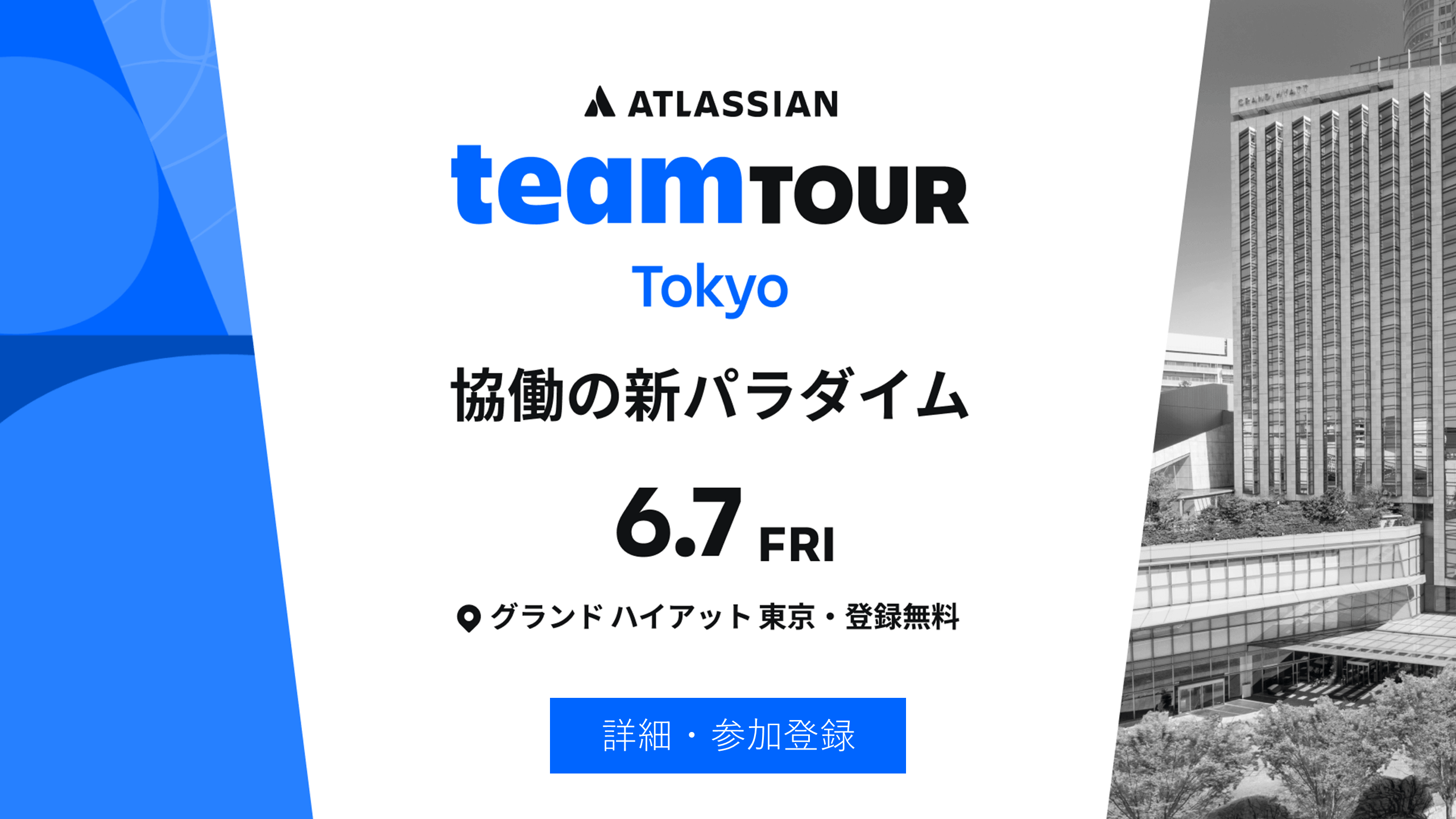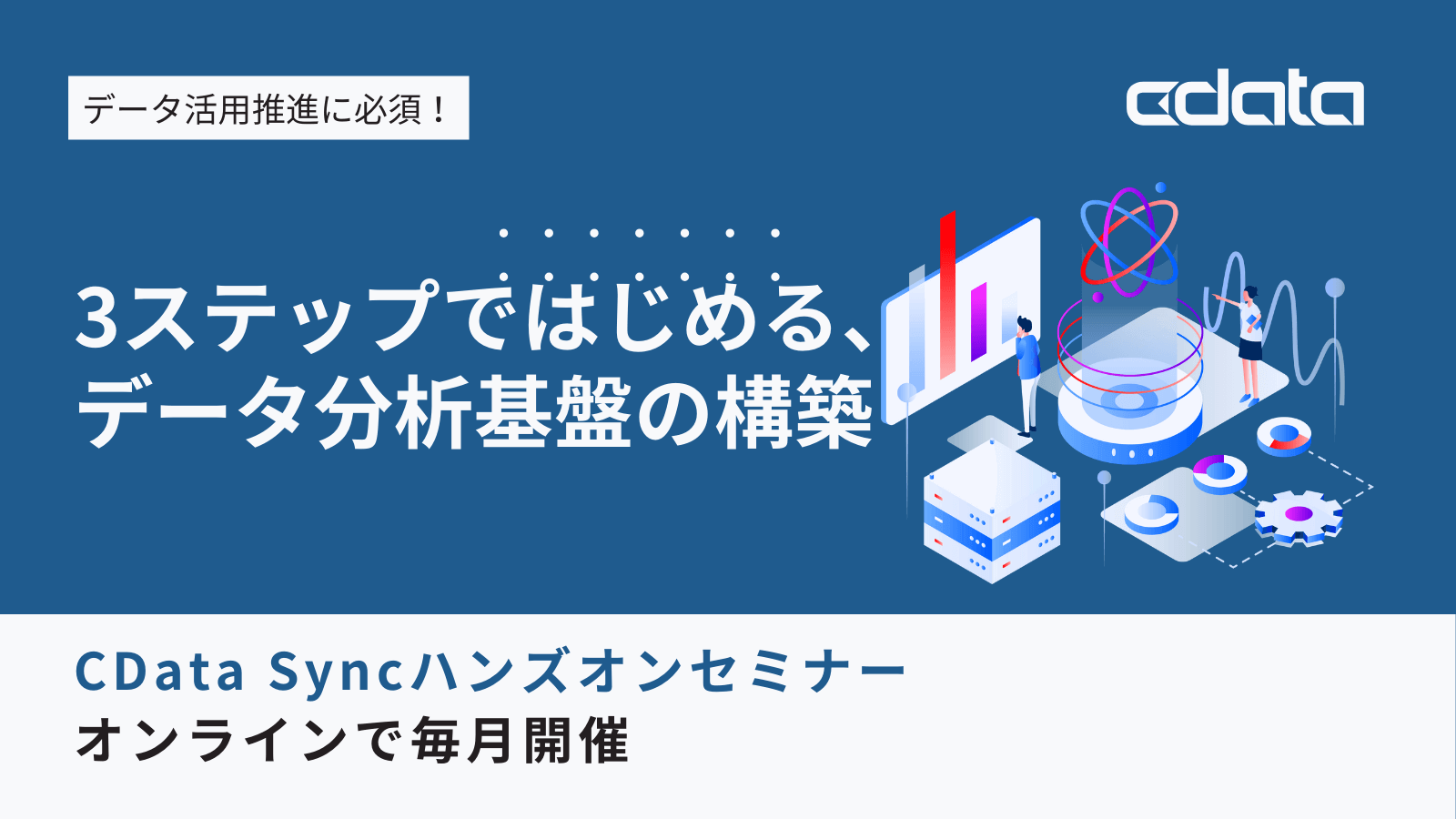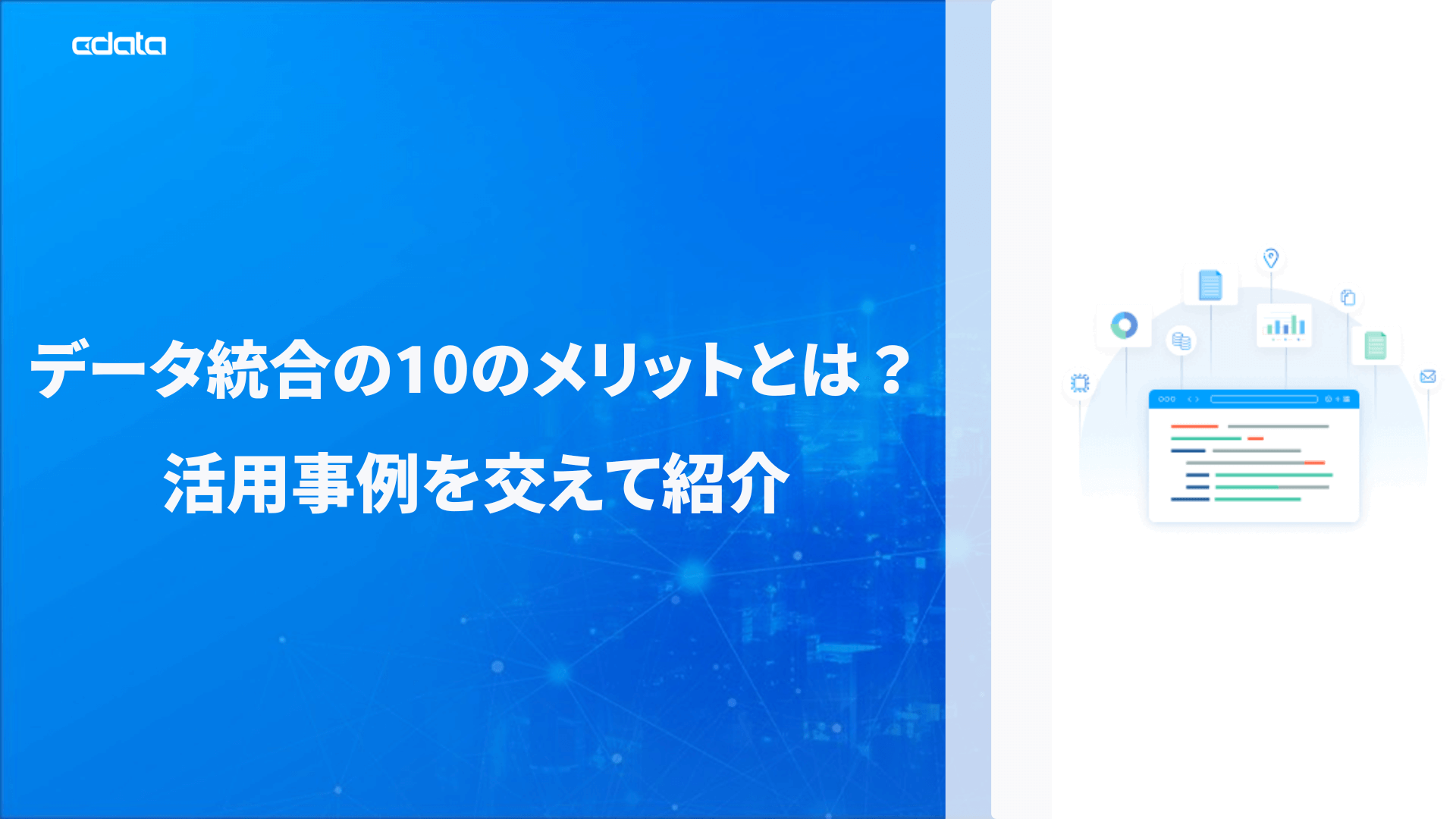ノーコードでクラウド上のデータとの連携を実現。
詳細はこちら →CData Software Japan - ナレッジベース
Latest Articles
- MySQL のデータをノーコードでREST API として公開する方法:CData API Server
- CData Sync AMI をAmazon Web Services(AWS)で起動
- Connect Cloud Guide: Derived Views, Saved Queries, and Custom Reports
- Connect Cloud Guide: SSO (Single Sign-On) and User-Defined Credentials
- Connect Cloud クイックスタート
- Shopify APIのバージョンアップに伴う弊社製品の対応について
Latest KB Entries
- DBAmp: Serial Number Expiration Date Shows 1999 or Expired
- CData Drivers のライセンスについて
- Spring4Shell に関する概要
- Update Required: HubSpot Connectivity
- CData Sync で差分更新を設定
- Apache Log4j2 Overview
ODBC Drivers
- [ article ] Exploratory でSansan データを連携する方法
- [ article ] Visio のシェイプとSage 300 データを連携
- [ article ] Email データにSAP BusinessObject Universe からリアルタイム連携
- [ article ] Tableau Bridge でTableau Cloud からのGoogle Directory ...
JDBC Drivers
- [ article ] RPA ツールBizRobo! でFreshBooks に連携したフローを作成する
- [ article ] OneNote データをBoomi AtomSphere で連携利用する方法:CData JDBC ...
- [ article ] TALON でPCA Sales にデータ連携する画面を生成
- [ article ] RazorSQL からLDAP データに連携。
SSIS Components
- [ article ] LinkedIn Ads データからSQL Server ...
- [ article ] Amazon S3 データからSQL Server ...
- [ article ] SQL Analysis Services データからSQL Server ...
- [ article ] Couchbase をSSIS 経由でSQL サーバーにバックアップする
ADO.NET Providers
- [ article ] PowerShell からMicrosoft Dataverse ...
- [ article ] 生産スケジューラFLEXSCHE へShipStation からデータを取り込む
- [ article ] LINQ to PCA Sales データに連携してみた
- [ article ] ColdFusion にリアルタイムMongoDB データをインポートしてアプリケーションを構築
Excel Add-Ins
- [ article ] RazorSQL からExcel データに連携。
- [ article ] StiLL からCData Software ODBC Driver を使ってPipedrive ...
- [ article ] Excel Online データをDataSpider Servista の連携先として使う方法
- [ article ] Microsoft Power BI Designer でCData Software ODBC ...
API Server
- [ article ] 国産BI ツールのActionista! からOData に直接連携してビジュアライズ
- [ article ] Tableau からOData にJDBC Driver で連携してビジュアライズ
- [ article ] RPA ツールUiPath でOData データを連携利用する方法
- [ article ] Create!WebフローのサブフォームにOData データを一覧表示させて使う方法:CData ...
Data Sync
- [ article ] Google BigQuery へのRedshift データのETL/ELT ...
- [ article ] 複数Excel アカウントをレプリケーション
- [ article ] Amazon S3 へのSpark データのETL/ELT パイプラインを作ってデータを統合する方法
- [ article ] IBM Cloud Object Storage データからSQL Server ...
Windows PowerShell
- [ article ] PowerShell からAcumatica データに接続してデータの取得・更新・挿入・削除・CSV ...
- [ article ] Autify データをPowerShell でMySQL にレプリケーションする方法
- [ article ] PowerShell からAct-On データに接続してデータの更新・挿入・削除を実行する方法
- [ article ] Reckon Accounts Hosted データをPowerShell script でSQL ...
FireDAC Components
- [ article ] Delphi のBusiness b-ridge データへのデータバインドコントロール
- [ article ] Delphi のBugzilla データへのデータバインドコントロール
- [ article ] Delphi のAzure Analysis Services データへのデータバインドコントロール
- [ article ] Delphi のHBase データへのデータバインドコントロール






